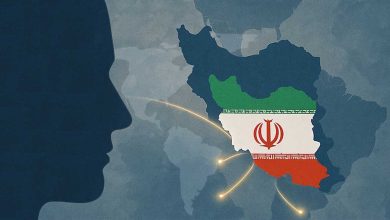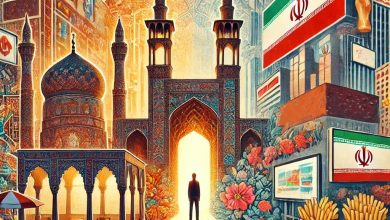
In the wake of recent developments in the South Caucasus, a peace agreement between the Republic of Azerbaijan and Armenia—brokered by the United States—has ushered in a new phase in the region’s geopolitical dynamics. Under this agreement, the so-called Zangezur Corridor, which passes through Armenian territory and connects Azerbaijan to Nakhchivan and then to Turkey, will be leased and managed by the United States for 99 years. This route has become known as the “Trump Route.” The development is significant not only from an economic and transit perspective but also as a turning point in the rivalry between regional and extra-regional powers, with profound implications for the security, economy, and politics of surrounding countries—particularly Iran.
The creation and management of this route by the United States amounts to the establishment of a long-term sphere of influence along Iran’s northern borders. Such a presence could enhance U.S. monitoring and security capabilities near Iranian territory, limiting Iran’s freedom of action in the South Caucasus. Economically, the operationalization of this route will redirect part of the transit flow between Central Asia, the Caucasus, and Europe to alternatives bypassing Iran. This shift may reduce Iran’s transit revenues, weaken its position as a bridge between East and West, and increase its dependence on routes beyond its direct control. In times of political tension, this dependency could become a tool for exerting pressure and restricting Iran’s access to international markets.
The geopolitical dimensions of this agreement are equally significant for other powers. For Russia, the long-term and direct U.S. presence in the South Caucasus represents a retreat from its traditional sphere of influence and a weakening of its strategic role in this sensitive region. Such changes could push Moscow toward countermeasures, such as boosting military cooperation with regional allies, investing in alternative transit routes, or leveraging energy and security tools to offset the corridor’s impact. China, while potentially welcoming shorter trade routes to Europe, may find the prominent U.S. presence along a key Eurasian artery misaligned with its geopolitical interests. Beijing is therefore likely to adopt a cautious approach—capitalizing on the economic benefits while simultaneously working to secure independent access or create parallel routes.
The future of this route can be assessed in three timeframes. In the short term, legal consolidation, the initiation of infrastructure investment, and increased political engagement between the U.S., Azerbaijan, and Turkey are expected. In the medium term, a significant decline in transit flows through Iranian routes and the formation of new regional blocs are probable. In the long term, if the project succeeds and U.S. management continues, the balance of power in the South Caucasus will likely shift in favor of the United States and its allies—diminishing the roles of Iran and Russia. Nevertheless, the possibility of tensions, instability, or the entry of new actors to compete for control over the corridor remains.
Iran is compelled to redefine its regional strategy in response to this development. Diplomatically, strengthening ties with Armenia and working to limit the corridor’s influence within Armenian territory could become priorities. Economically, accelerating the development of the North–South Transport Corridor and creating alternative routes in cooperation with India, Russia, and Central Asian states is essential to offset transit losses. From a security perspective, bolstering military and intelligence presence along the northwestern borders, enhancing deterrence capabilities, and collaborating with like-minded powers could help prevent the expansion of direct threats. Domestically, managing ethnic sensitivities and countering the spread of pan-Turkist tendencies is critical, as internal instability could heighten Iran’s vulnerability to external developments.
For the United States, involvement in this issue carries not only geopolitical but also political and symbolic motives. It serves as a tool to curb Russian and Iranian influence, control part of Eurasia’s transit networks, and establish a permanent foothold at the crossroads linking Central Asia to Europe. For Donald Trump personally, managing and branding this route presents an opportunity to showcase a major diplomatic achievement and boost his domestic political standing. Meanwhile, the close cooperation of Turkey and Azerbaijan in this initiative strengthens their positions as key hubs in regional transit, expanding their political and economic influence in the South Caucasus and beyond.
The so-called “Trump Route” is far more than a mere transit project; it is part of a new geopolitical architecture in the South Caucasus designed to reshape the balance of power in favor of the United States and its allies. This corridor has the potential to erode Iran’s role as an independent and pivotal regional transit player while becoming a focal point for intense competition among major powers. Iran’s response will determine how much of its strategic position it can preserve in the future—a challenge that requires a coordinated, multi-layered approach integrating diplomatic, economic, security, and domestic dimensions






